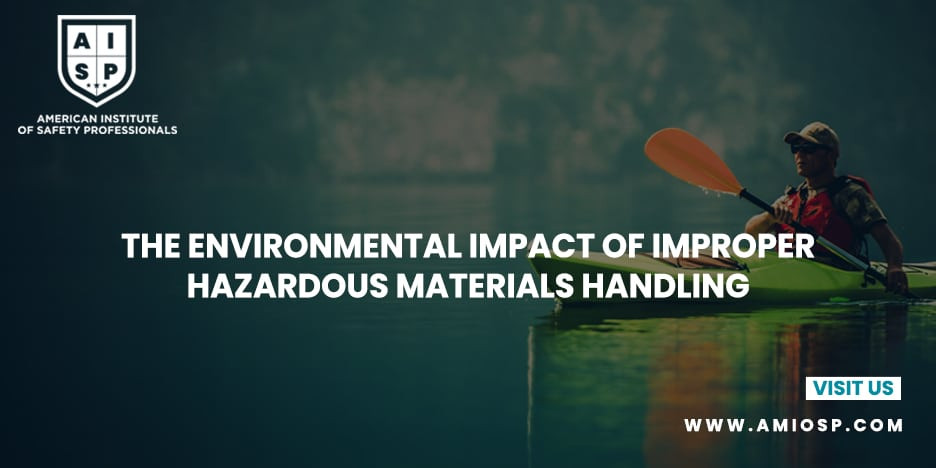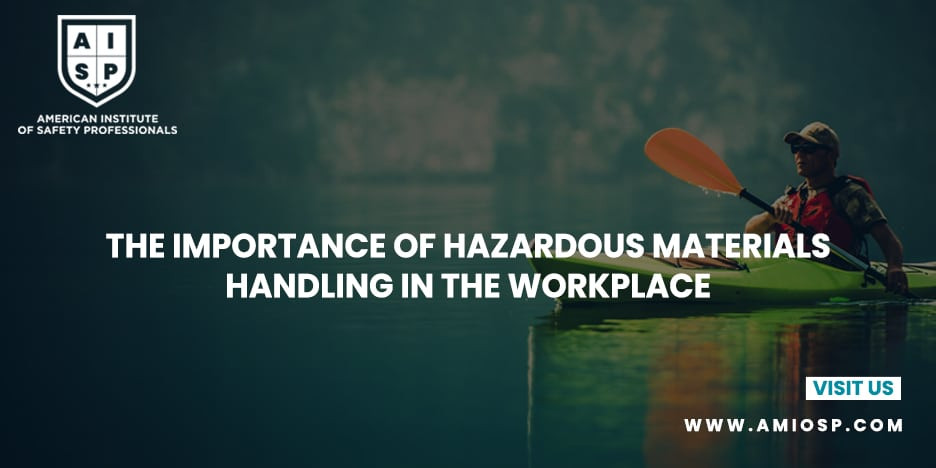Hazardous materials, if not handled properly, pose
significant risks to both human health and the environment. The improper
handling and disposal of these materials can result in severe environmental
consequences, including pollution, ecosystem disruption, and long-term damage.
In this blog post, we will explore the environmental impact of improper
hazardous materials handling and the importance of responsible management
practices.
Introduction: Understanding the Significance of
Hazardous Materials
Hazardous materials encompass a wide range of substances,
including chemicals, gases, liquids, and solids that have the potential to
cause harm to human health or the environment. These materials may be toxic,
flammable, corrosive, reactive, or pose other hazards. They are commonly found
in industrial processes, manufacturing, construction, and various other
sectors.
Pollution of Air, Water, and Soil
Improper handling and disposal of hazardous materials can
lead to pollution of the air, water, and soil. Here are some examples of how
each of these environmental components can be impacted:
- Air
Pollution: Inadequate containment, spills, or releases of hazardous
substances can result in the emission of toxic gases or volatile organic
compounds (VOCs) into the air. These pollutants can contribute to air
pollution and pose risks to human health, as well as harm ecosystems and
vegetation.
- Water
Pollution: Improper disposal or accidental spills of hazardous
materials can contaminate water sources, such as rivers, lakes, or
groundwater. This pollution can have detrimental effects on aquatic life,
disrupt ecosystems, and render water unfit for human consumption or
agricultural use.
- Soil
Contamination: Improper handling, storage, or disposal of hazardous
materials can result in soil contamination. Chemicals seeping into the
soil can persist for long periods, affecting plant growth, soil fertility,
and potentially entering the food chain. Soil contamination also poses
risks to groundwater, further exacerbating the environmental impact.
Impact on Biodiversity and Ecosystems
The environmental impact of improper hazardous materials
handling extends to biodiversity and ecosystems. Here are some key aspects to
consider:
- Loss
of Biodiversity: Pollution caused by hazardous materials can harm or
even lead to the loss of various plant and animal species. Toxic
substances can accumulate in organisms, causing reproductive issues,
developmental abnormalities, and even population decline. The disruption
of natural habitats and ecosystems can have far-reaching consequences on
the overall biodiversity of an area.
- Ecosystem
Disruption: Contamination of water bodies and soil can disrupt entire
ecosystems. Pollutants can enter the food chain, affecting not only
aquatic organisms but also terrestrial animals and humans who depend on
these ecosystems. Disrupted ecosystems may experience imbalances, reduced
resilience, and a decline in overall ecosystem services.
Long-Term Effects and Persistence
One of the concerning aspects of improper hazardous
materials handling is the potential for long-term effects and persistence in
the environment. Some hazardous substances can persist for extended periods,
leading to ongoing environmental damage. Examples include:
- Persistent
Organic Pollutants (POPs): Certain hazardous materials, such as
certain pesticides, industrial chemicals (e.g., PCBs), and some flame
retardants, fall under the category of persistent organic pollutants.
These substances are resistant to environmental degradation, accumulate in
living organisms, and can travel long distances through air and water
currents.
- Groundwater
Contamination: Improper disposal practices can lead to the
contamination of groundwater, which serves as a vital source of drinking
water for many communities. Once groundwater becomes contaminated with
hazardous substances, it can be challenging and costly to clean up, posing
risks to human health for years to come.
The Importance of Responsible Management Practices
To mitigate the environmental impact of hazardous materials
handling, responsible management practices are crucial. Here are some key
measures that organizations should prioritize:
- Compliance
with Regulations: Strict adherence to local, national, and
international regulations governing hazardous materials handling and
disposal is essential. Compliance ensures that proper protocols are
followed, minimizing the risk of environmental harm.
- Safe
Storage and Handling: Implementing appropriate storage facilities,
containment systems, and handling procedures is vital. This includes
storing hazardous materials in designated areas, utilizing proper labeling
and signage, and training employees on safe handling practices.
- Waste
Minimization and Recycling: Organizations should strive to minimize
the generation of hazardous waste through process optimization, recycling,
and adopting cleaner production techniques. Recycling hazardous materials
reduces the need for disposal and promotes resource conservation.
- Proper
Disposal Methods: When disposal is necessary, hazardous materials
should be treated and disposed of using approved methods that minimize
environmental impact. This may involve incineration, chemical treatment,
or other specialized processes that neutralize or break down hazardous
substances.
- Emergency
Preparedness: Establishing robust emergency response plans that
outline procedures for containing spills, addressing accidents, and
minimizing environmental damage is critical. Proper training and regular
drills ensure that employees are prepared to respond effectively to
hazardous materials incidents.
Collaboration and Transparency
Addressing the environmental impact of hazardous materials
handling requires collaboration among stakeholders, including government
agencies, industries, and communities. Transparency in reporting and sharing
information on the use, storage, and disposal of hazardous materials fosters
accountability and helps identify areas for improvement.
Conclusion: Promoting Sustainable Hazardous Materials
Management
The environmental impact of improper hazardous materials
handling is a significant concern that must be addressed through responsible
management practices. By prioritizing compliance, safe storage, waste minimization,
proper disposal, and emergency preparedness, organizations can minimize their
ecological footprint and contribute to a sustainable future. Together, we can
protect our environment, preserve biodiversity, and ensure a healthier planet
for generations to come.











0 comments
No Comments